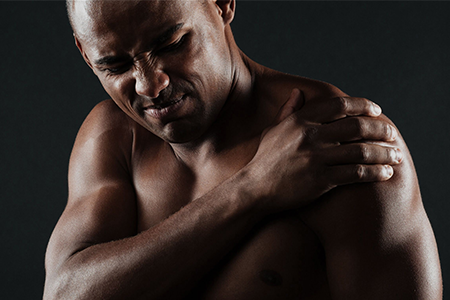Ask any gym goer or general fitness enthusiast and they will tell you that after a hard day’s exercise, they really feel it; the joints are stiff, the chest and heart have done more than their fair share, and, more often than not, the muscles are completely sore and tender. We accept it as ‘just one of those things’, and for the most part, it is. It’s a sign your body is repairing the damage its sustained through exercise. But there are some things you can do in order to speed up the recovery process and get those aches and pains on their way.
The first thing anyone needs to do is hydrate. It is amazing how much soreness is down simply to ignoring this rule. Water ensures your body gets the necessary glucose and other nutrients that are diverted to muscle repair. Remember that soreness comes with damage, and to repair microtears and strains, your body needs plenty of water. It also helps regulate body temperature.
Also important is warming up before a workout. Like starting a car in the winter, your body needs some time where it can run at a gentle pace before you absolutely hammer it with exercise. If your muscles and joints haven’t had a chance to get into the rhythm, you risk not only prolonged periods of (avoidable) muscle soreness, but also the increased chance of tears, sprains and other muscle damage, some of which can be permanent.
Do not overwork your muscles either. The old adage of ‘no pain, no gain’ has actually been debunked as it can be downright dangerous. When you start to feel pain and soreness in the muscles, it’s a sign that they are in need of rest and are starting to experience fatigue and (a normal level of) damage. At this point, you need to listen to your body and rest. As you get more acclimatized to training and working out, you’ll see that you can go longer before this pain kicks in, so don’t panic; in good time, you’ll be able to train for longer.
Tied in with this is the requirement for plenty of rest. Once you feel that burn and soreness, its imperative that you listen to what your body is telling you and rest up the affected area. It’s perfectly fine to continue exercising but make sure you split your workouts; if your back and shoulders are hurting, then spend 48 hours without exercising them and move onto the legs, and vice versa. It’s also advisable to lightly move the sore muscles, such as one would do with warm up exercises, just so they don’t produce that ‘seized up’ feeling.
We’re all only human and no person is going to be able to keep going in a constant exercise cycle without ever feeling worn out and sore. It’s a by-product of a successful workout. But its how we manage the symptoms and respond to them that matters. If we ignore it when it comes on, we’ll make a minor problem potentially worse. If we try and force the problem away, we’ll just prolong it. If we don’t take preventative, common sense measures, then we’re more likely to experience it in the first place. Keep your eye on your daily routine; hydrate regularly, get in plenty of low key warming up and particularly as you approach the time slot for your workout. Look at your exercise progress and time how long it takes for you to start ‘feeling the burn’ so you know when you need to tap out. Not only will you find that your recovery is quicker, you will also be keeping your muscles working more efficiently until way later in life.


